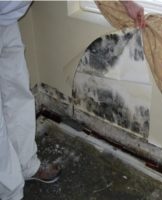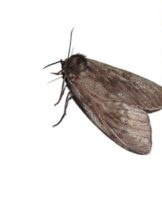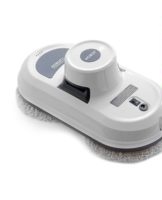The main types of cleaning towels and the rules for their selection
To maintain cleanliness in living quarters, regular wet and dry cleaning is necessary. A prerequisite for high-quality cleaning of the house is the correct choice of equipment for removing dirt and dust. The rags previously used for second-hand clothes and bedding have given way to special cleaning towels.
The main varieties by subject
The materials of the cleaning towels differ in the composition of the raw materials. Towels are made of cellulose, microfiber, viscose, bamboo.
Cellulose
The natural raw materials from which the towels are made meet the requirements of quality and environmental safety. The hygroscopic material is made of 70% cellulose and 30% cotton. Cellulose fibers have the ability to swell when exposed to water. Cotton threads add elasticity to the towel.
The peculiarity of the use of the material - preliminary moistening is required. A slightly moistened product easily absorbs and retains a large amount of moisture. Used to remove dust and dirt. At the end of cleaning, simply rinse the towel with soapy water. As it dries, the material hardens, which prevents fungi and bacteria from multiplying. Once dry, it should not deform.
Microfiber
The material contains polyester and polyamide.
Microfiber towels are available in 2 versions:
- Woven. Synthetic yarns have the same weave as cotton. Towels look like pieces of cloth, absorb water well, leaving no residue after drying. Recommended for wiping matte surfaces.
- Nonwoven. Synthetic material obtained by treatment of fibers under pressure. It absorbs moisture well, has polishing properties. Removes traces of grease without using cleaning products.
The non-woven material has a denser structure, there is no hairiness at all. Microfiber is used for dry cleaning and wet cleaning. Rag cleaners are effective at removing dust without wetting. Non-woven microfiber is more suitable for wet cleaning.
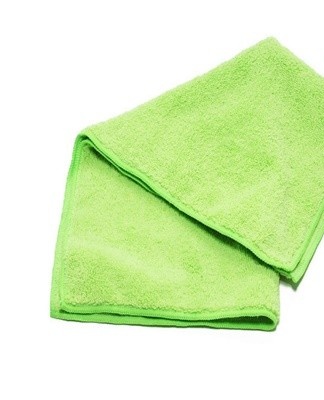
Universal towels can be washed at 60-95 degrees in the washing machine or by hand with powder. Do not dry on a radiator or iron.
Viscose
A viscose cloth is a modified version of a cellulose cleaner. Artificial fibers are obtained from natural raw materials (cellulose) as a result of chemical treatment. The material can be used for dry and wet cleaning. A dry cloth in contact with plastic does not electrify the surface.
For wet cleaning, the towel should be rinsed with water without detergents. Drying - with natural air circulation. The service life is limited compared to other types of materials. The advantage is the low cost.
Viscose fabric is used in latex wipes. The cleanser looks like a three-layer sandwich: latex-viscose-latex. This fabric is more durable than pure rayon. Use wipes only for wet cleaning.Advantage - high-quality cleaning of all surfaces without leaving streaks. Does not eliminate fingerprints on the glass.
Bamboo
Bamboo linen is a natural material without chemical impurities or additives, with a porous tubular structure.
The advantages of bamboo products are due to the structural characteristics of the fiber:
- They eliminate fatty deposits well and degrease easily with hot water during washing. The products can be used to wash dishes without cleaning agents.
- They are hygroscopic.
- Leave no traces.
- They do not lend themselves to microbial contamination.
- The lifespan is unlimited.
- The number of washing cycles - 500 times (with machine wash - without conditioner; do not tumble dry, do not iron).
- Environmentally friendly, non-allergenic.
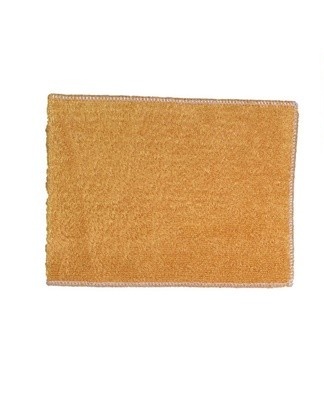
The bamboo wipes are suitable for dry and wet cleaning in an apartment/house.
Rules for choosing household napkins
The material for cleaning dust and dirt is selected depending on the type of surface, the degree of pollution.
This takes into account:
- matte or glossy surface;
- are there any fingerprints;
- mud and grease deposits or their traces;
- the possibility of using wet cleaning.
For household needs, towels of different materials are needed at the same time.
Stage
The floor is the most polluted surface in the room. Traces of food, dust, lime deposits are removed from the floor. The cleaning method is always wet. As a toolbox, the best cleaning products are viscose and microfiber wipes. The material can be rinsed several times during cleaning to remove all dirt from the floor without streaking.
Furniture
Wooden, chipboard, laminated chipboard furniture is cleaned from dust without detergents. Plastic kitchen utensils can be washed with pastes, gels, dishwashing detergents. Microfiber is used for dry cleaning of matt and polished surfaces.
Viscose products are used where static electricity can be induced. Metal handles are wiped down with non-woven microfiber, which has polishing properties.
Plastic furniture is washed with latex, cellulose, bamboo towels.

Tile
Splashes of water, soap, oil are deposited on the tiles. Dust accumulates in the seams. Cellulose, latex and bamboo fabrics will remove plaque from surfaces and seams without damaging the surface.
Technical
It is more convenient to wipe the microwave oven, refrigerator, washing machine with a damp microfiber cloth. It is better to clean the TV, computer / laptop from dust with a cleaner based on viscose.
Food
For the kitchen, a bamboo or cellulose cleaner is a universal cleaner.
Glass and mirrors
Glass and mirrors can be as clean and streak-free as possible by using non-woven microfiber products.
Additional tips
Non-woven microfiber wet wipes are commercially available. The products are impregnated with a disinfectant solution and stored in a packaging fitted with a valve. Disposables are needed to wipe clean surfaces for disinfection purposes. At home, you can use a roll of cleaning cloth used in car washes.
The technical material is produced from:
- non-woven propylene;
- viscose;
- waste paper with cellulose.
The size of the towel is not limited in length, which is convenient for mopping the floor with water, wiping the tiled walls. Cut a piece of fabric to the correct size using a mop. Manufacturers offer options for rubberized microfiber and cellulose fabrics, which extend the life of products and improve the quality of dirt-cleaning surfaces. Each type of napkin has its own shelf life, after which the product loses its consumer qualities. Streaks appear on the surfaces and villi remain. You must follow the manufacturer's instructions regarding method and duration of use.

